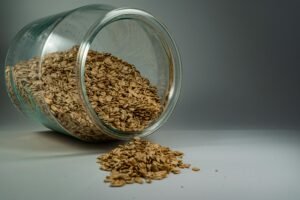Powering Up: How to Add More Protein to Your Diet
Protein is an essential macronutrient that plays a crucial role in building and repairing tissues, supporting immune function, and maintaining overall health. Whether you’re a fitness enthusiast, following a plant-based diet, or simply looking to improve your nutrition, increasing your protein intake can have numerous benefits. This comprehensive guide will explore various ways to add more protein to your diet, including on-the-go options, plant-based sources, and animal proteins.
The Importance of Protein
First and foremost, it’s crucial to understand why protein is so important. Protein is made up of amino acids, which are the building blocks of our body’s tissues, including muscles, bones, and skin. Additionally, protein helps regulate hormones, supports enzyme production, and aids in maintaining a healthy metabolism.
How to Add More Protein to Your Diet
Plant-Based Protein Sources
For those following a vegetarian or vegan diet, or simply looking to incorporate more plant-based options, there are numerous protein-rich foods to choose from:
- Legumes: Beans, lentils, and chickpeas are excellent sources of protein and fiber.
- Nuts and Seeds: Almonds, chia seeds, and hemp seeds are protein-packed and rich in healthy fats.
- Whole Grains: Quinoa, oats, and amaranth provide a good amount of protein along with complex carbohydrates.
- Soy Products: Tofu, tempeh, and edamame are complete protein sources.
For more information on plant-based nutrition, check out our article on balanced vegan meal planning.
Animal Protein Sources
For those who include animal products in their diet, these options provide high-quality, complete proteins:
- Lean Meats: Chicken, turkey, and lean beef are excellent protein sources.
- Fish: Salmon, tuna, and cod are rich in protein and omega-3 fatty acids.
- Eggs: A versatile and affordable protein source.
- Dairy: Greek yogurt, cottage cheese, and milk are protein-rich options.
On-the-Go Protein Options
Busy lifestyles often require quick and convenient protein sources. Here are some portable options:
- Protein Bars: Look for bars with minimal added sugars and high protein content.
- Nuts and Seeds: A handful of almonds or pumpkin seeds makes for a quick protein boost.
- Hard-Boiled Eggs: Easy to prepare in advance and perfect for on-the-go snacking.
- Protein Shakes: Pre-made or powdered options can be convenient for busy days.
Strategies to Increase Protein Intake
- Start Your Day with Protein: Replace cereal with eggs or Greek yogurt for a protein-rich breakfast.
- Snack Smart: Choose protein-rich snacks like cheese, nuts, or hummus with vegetables.
- Add Protein to Salads: Top your salads with grilled chicken, tofu, or beans for an extra protein boost.
- Use Protein Powder: Add a scoop to smoothies, oatmeal, or baked goods for an easy protein increase.
Pros and Cons of Different Protein Sources
Plant Protein
Pros:
- Often high in fiber and other nutrients
- Generally lower in saturated fat
- Environmentally friendly
Cons:
- Some sources are incomplete proteins
- May require combining different sources for a complete amino acid profile
Animal Protein
Pros:
- Complete protein sources
- High bioavailability
- Rich in certain nutrients like B12 and iron
Cons:
- Can be higher in saturated fat
- Environmental concerns with some production methods
Potential Side Effects of High Protein Intake
While increasing protein intake can be beneficial, it’s important to be aware of potential side effects:
- Digestive Issues: A sudden increase in protein intake may cause bloating or constipation.
- Dehydration: High protein diets may increase the need for water intake.
- Kidney Strain: Excessive protein intake may put additional stress on the kidneys, especially in people with existing kidney issues.
Conclusion
Incorporating more protein into your diet can be achieved through various sources and strategies. Whether you prefer plant-based options, animal proteins, or a combination of both, there are numerous ways to boost your protein intake. Remember to increase your protein consumption gradually and stay hydrated. By making mindful choices and incorporating a variety of protein sources, you can support your overall health and fitness goals.

Disclaimer
This article is for informational purposes only and does not constitute medical advice. Always consult with a healthcare professional or registered dietitian before making significant changes to your diet, especially if you have pre-existing health conditions.
Content Sources
- Healthline
- Mayo Clinic
- American Journal of Clinical Nutrition
- Journal of the International Society of Sports Nutrition
- Academy of Nutrition and Dietetics















